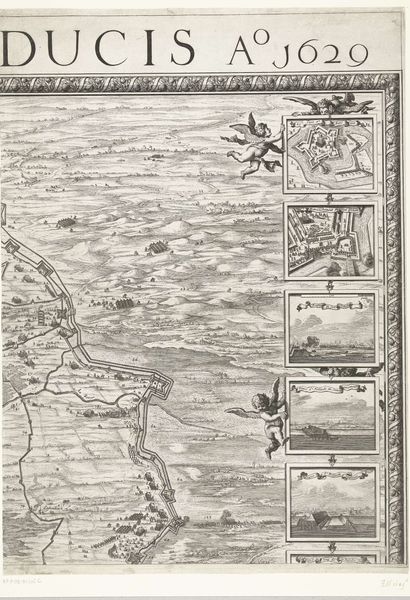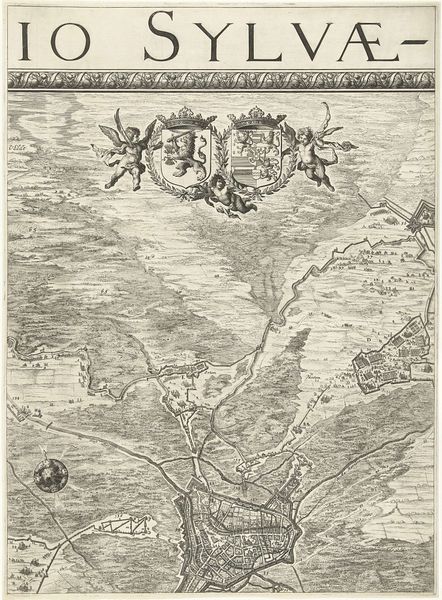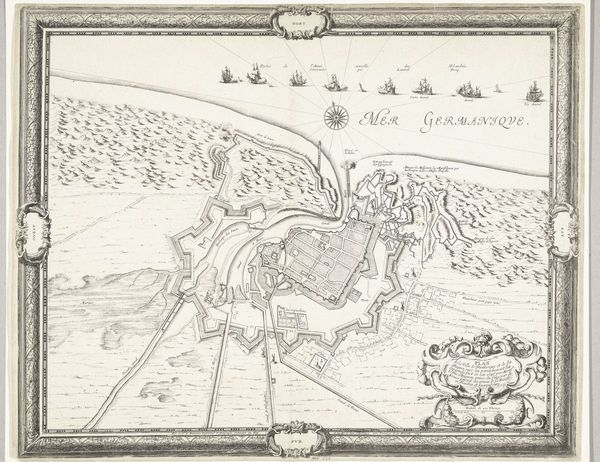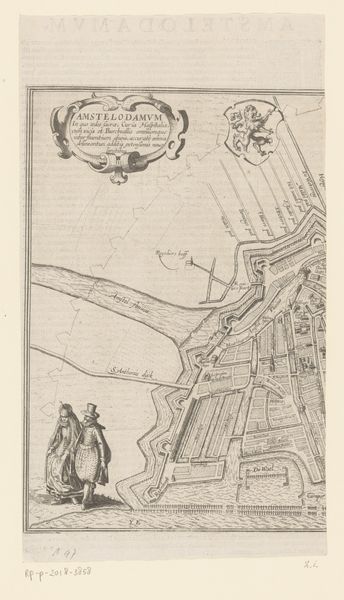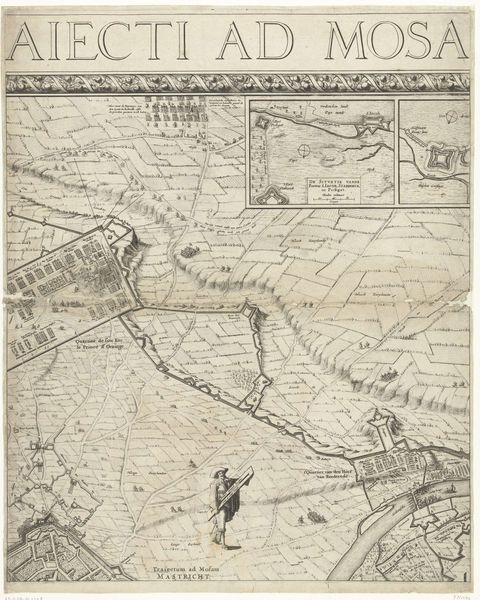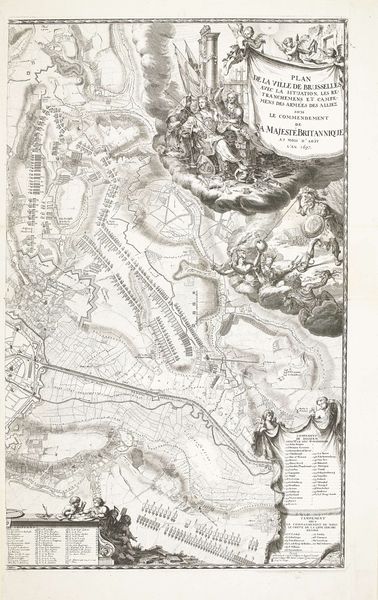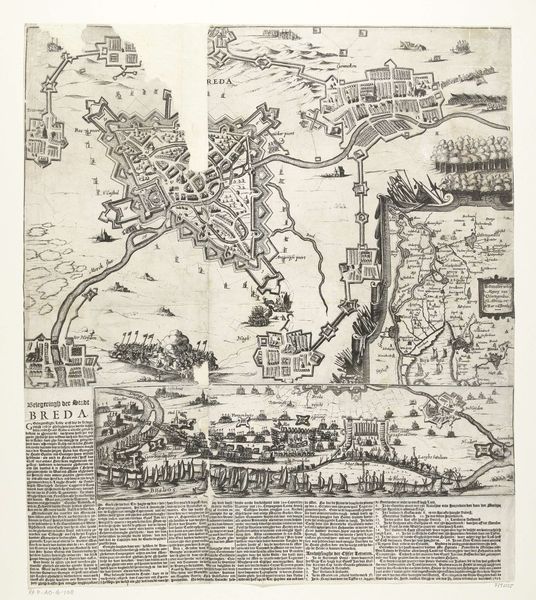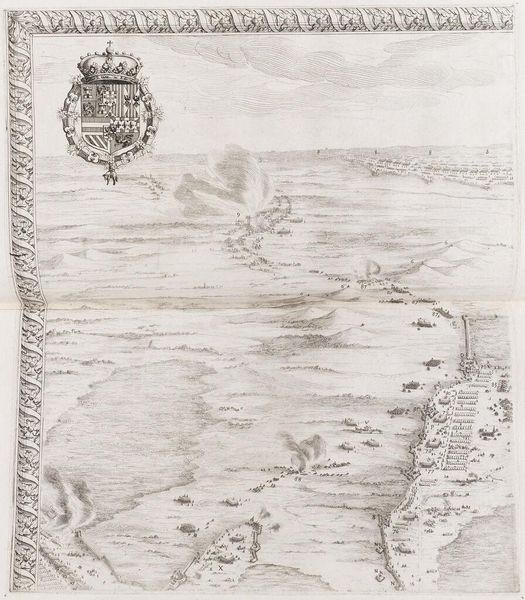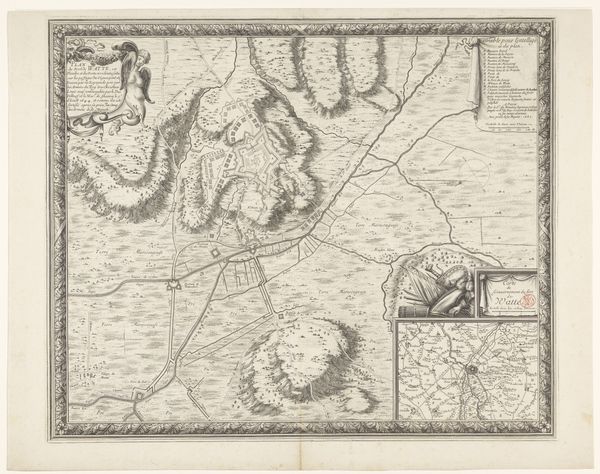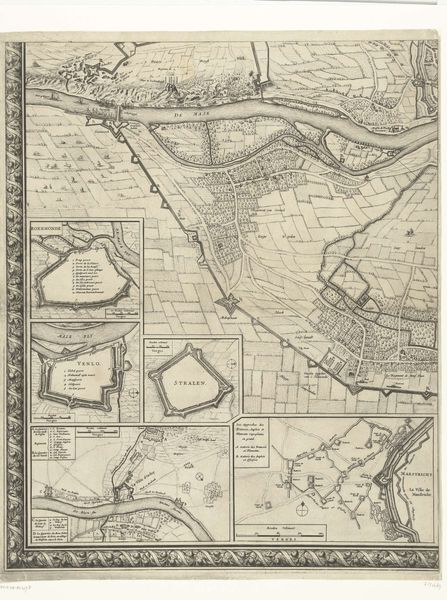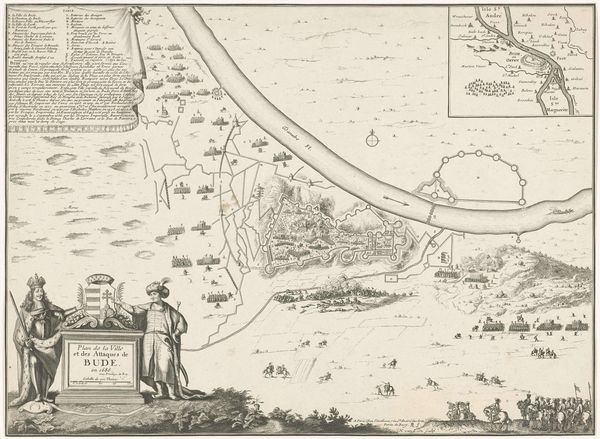
print, etching
#
baroque
# print
#
etching
#
landscape
#
cityscape
#
history-painting
Dimensions: height 652 mm, width 490 mm
Copyright: Rijks Museum: Open Domain
Salomon Savery created this print, "Siege of Den Bosch in 1629," which resides at the Rijksmuseum, to memorialize a pivotal moment in Dutch history. As a cartographic representation of the siege, this print is more than just a factual document; it's a narrative imbued with the political and cultural context of the 17th century. Consider the position of the Netherlands at this time, entangled in the Eighty Years' War against Spain, a struggle deeply interwoven with religious and economic tensions. Savery, born into an artistic family in the Netherlands, would have been influenced by the surge of Dutch nationalism and the desire for independence. Through detailed imagery, Savery invites viewers to witness the strategies of war, while also subtly reinforcing Dutch identity and resilience in the face of conflict. The inclusion of cherubic figures softens the harsh realities of war. It's a reminder of the human cost of conflict, subtly urging reflection on the human condition amidst the clash of nations. The artwork, thus, becomes a poignant intersection of history, identity, and the shared human experience.
Comments
rijksmuseum about 2 years ago
⋮
After a four-and-a-half month siege Den Bosch surrenders to Frederick Henry on 14 September 1629. The Spanish troops withdraw from the city, and Den Bosch becomes part of the Republic. The city was entirely encircled by a 45-kilometer line. Marshes are reclaimed, trenches dug, dikes thrown up, and ramparts control the access roads. The magnitude of this enterprise, paid for by the proceeds of the Silver Fleet, is recorded in this triumphal map.
Join the conversation
Join millions of artists and users on Artera today and experience the ultimate creative platform.
